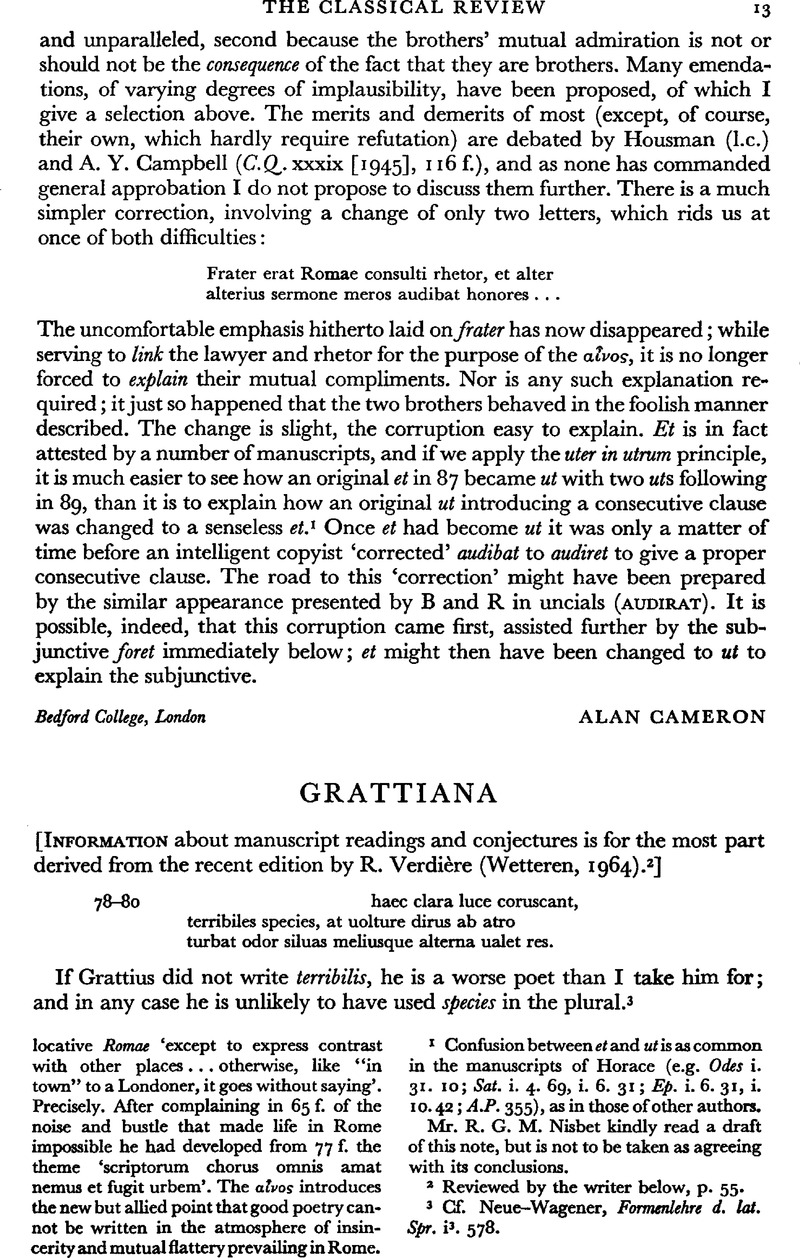No CrossRef data available.
Article contents
Grattiana
Published online by Cambridge University Press: 27 February 2009
Abstract

- Type
- Review Article
- Information
- Copyright
- Copyright © The Classical Association 1965
References
page 13 note 1 Confusion between et and ut is as common in the manuscripts of Horace (e.g. Odes i. 31. 10; Sat. i. 4. 69, i. 6. 31; Ep. i. 6. 31, i. 10.42; A.P. 355), as in those of other authors.
Mr. R. G. M. Nisbet kindly read a draft of this note, but is not to be taken as agreeing with its conclusions.
page 13 note 2 Reviewed by the writer below, p. 55.
page 13 note 3 Cf. Neue–Wagener, , Formenlehre d. lat. Spr. i 3. 578.Google Scholar
page 14 note 1 406 ac sic offectus oculique uenena maligni | uicit tutela pax impetrata deorum. At 316 I not know why Baehrens's ac has been preferred to Sannazarius' et; palaeographical do considerations can hardly decide.
page 14 note 2 Cf. Housman, , C.R. xiii (1899), 176.Google Scholar
page 15 note 1 omni Heinsius, Bentley: uitreoque uel uitroque … amne codd.
page 15 note 2 There may be a reminiscence of Lucret. vi. 1189, but it cannot be pressed, salsa sitis seems an eminently natural expression.
page 16 note 1 I do not know why modern editors are so sure that this name was spelt Melitensia.
page 16 note 2 Of the extensive collection of examples at Kühner–Stegmann, , Lat. Gr. i. 22–26, none is like this one.Google Scholar


